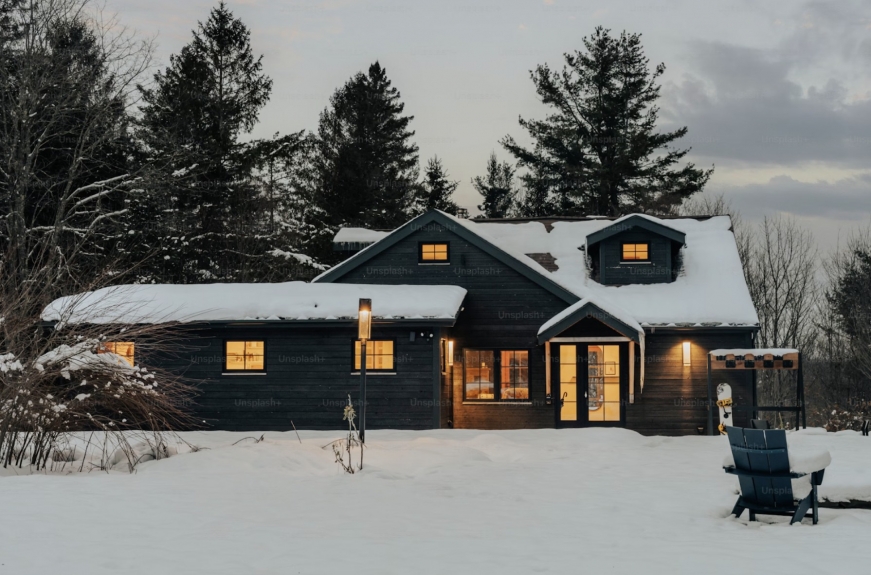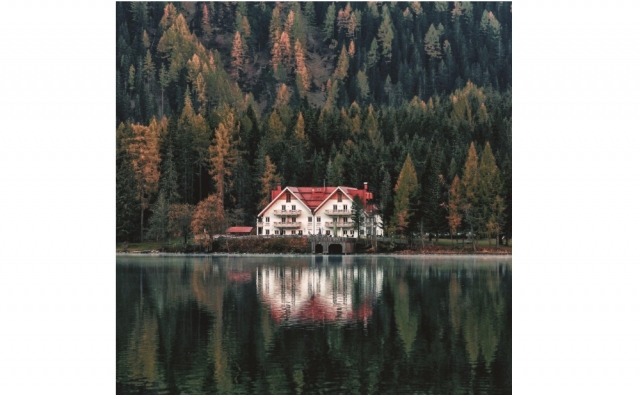There's something magical about an Ontario cottage in the summer – lazy mornings on the dock, evening fires, and weekends that engrave into memory.
But once the air turns crisp and the leaves begin to fall, cottage owners face an urgent reality. This is getting their seasonal home ready for winter.
Unlike your constant residence, a cottage often sits unoccupied for months at a time. That empty stretch makes it more vulnerable to burst pipes, theft, storm damage, and, unfortunately, gaps in insurance coverage.
The good news? With the right fall prep and a specialized seasonal home insurance policy, you can protect your retreat and enjoy peace of mind until spring.
At Oegema Nicholson, we've been guiding Ontario cottage owners for decades. Here is your complete guide to securing your seasonal property before the snow flies.
The ‘Closed for Winter' Risk

Closing your cottage isn’t just turning the key and driving away. Seasonal homes meet unique risks once the snow comes:
- Burst Pipes. When temperatures drop, water freezes and expands, often causing cracked pipes. The thaw brings flooding and thousands of dollars in damage.
- Theft and Vandalism. An empty cottage can become an easy target if valuables are left behind.
- Storm and Wind Damage. The aftermath of fallen branches, broken shingles, and roof leaks can go unchecked for months. And what was a minor problem at first turns into a serious issue.
Insurance companies know this. That’s why standard home policies often have exclusions for vacant properties. Without proper insurance for cottages and seasonal homes, you could be left paying out of pocket.
Winterizing Your Property: Must-Do Fall Tasks

Think of September and October as your window to act. These tasks are more than chores. They are your first line of defence and often a condition of insurance coverage.
1. Shut Off and Drain the Water
Turn off the main supply and drain pipes, toilets, and hot water tanks. Add non-toxic antifreeze to drains. This single step can save you from the number 1 cottage disaster – burst pipes.
2. Clear Gutters and Check the Roof
Remove leaves and debris so melting snow flows freely. Inspect shingles and flashing for wear to stop leaks before winter storms arrive.
3. Secure the Exterior
Lock windows and doors, and reinforce weak entry points. Closed shutters and trimmed back overhanging branches could also help protect your exterior from damage.
4. Defend Against Pests
Seal gaps, clean all food, and set deterrents. A family of raccoons in your attic isn’t the surprise you want next spring.
5. Bring Valuables Home
Take electronics, jewellery, tools, and alcohol with you. Anything worth stealing should be removed.
6. Service Heating and Alarms
If you leave the heat on, get your system reviewed. Replace smoke and CO detector batteries.
7. Unplug Appliances
Switch off electronics and small appliances to reduce energy waste and fire risk.
The ‘Vacant Property’ Clause: Know Your Coverage
Here’s a crucial detail many seasonal homeowners overlook. A standard home insurance policy may not cover damage if a property is deemed 'vacant' for too long.
In insurance terms:
- Unoccupied means no one is currently staying there, but it’s furnished and intended for use.
- Vacant means an empty property, without intent for immediate use, often triggering exclusions.
Most policies limit coverage once a property is vacant beyond a certain number of days. For cottages and seasonal homes, this creates a gap in protection just when you need it most.
That’s why a specialized seasonal home insurance policy is essential. These policies are designed with Ontario cottage owners in mind, offering coverage for extended vacancy, winter-related risks, and the realities of remote locations. At Oegema Nicholson, we work with you to ensure your policy aligns with how you actually use and leave your property.
Theft & Vandalism: Protecting Your Cottage When You’re Away

Winter silence in cottage country is beautiful, but it can also attract the wrong kind of attention. Seasonal homes without lights or activity are tempting targets for intruders.
Here is what to take before closing up:
- Remove all Valuables. Don’t leave electronics, ATVs, or alcohol.
- Install a Security System. Motion-activated lights, cameras, and alarms add strong deterrence. Many systems let you monitor in a remote mode.
- Arrange Check-Ins. Ask someone you trust to inspect the cottage periodically through the winter.
A proper insurance policy offers financial peace of mind if the worst happens. Still, it works only with reasonable theft and vandalism precautions taken. Think of these steps as both security measures and insurance requirements.
Fall Prep + Insurance: A Double Safety Net
Here’s the truth: fall prep and insurance aren’t separate. They go together. Insurers expect cottage owners to take reasonable measures to protect their property.
For example, if you don’t shut off the water and a pipe bursts, your claim may be denied due to neglect. But if you winterize properly and damage still occurs, your seasonal policy has your back.
In short, your fall checklist shields your cottage. Your insurance protects your wallet. Skimp on either, and you are exposed.
Why Choose Oegema Nicholson for Seasonal Home Insurance?
Closing up your cottage for the season might feel overwhelming. That is where we come in. At Oegema Nicholson, we don’t just sell policies – we partner with seasonal homeowners across Ontario to keep their properties safe year-round.
Here’s why cottage owners trust us:
- Tailored Coverage. We provide policies built for seasonal and secondary homes, covering extended vacancy and winter risks.
- Clear Guidance. We explain exclusions, conditions, and coverage in plain words, so you know exactly where you stand.
- Local Expertise. With decades of serving Ontario families, we understand the realities of cottage ownership, from frozen lakes to unpredictable fall storms.
Our goal? To make sure you never have to wonder if your cottage is protected while you’re away.






